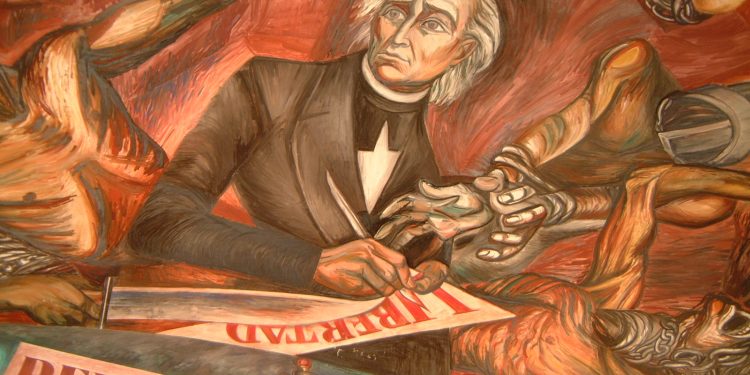On September 16, 1810, Miguel Hidalgo y Costilla freed the prisoners in the town of Dolores who had been locked up by the Spanish authorities and called on the people to rebel by ringing the church bells. Although he was later captured and shot for his insurrection, his actions sparked a movement that would lead to Mexico’s eventual independence from Spain.
September 16, 2010 marked the passing of two centuries since the first cry that sparked the independence movement. The bicentenary “grito“, as the cry is known, was re-enacted by Mexico’s then-president, Felipe Calderon (ex-presidents, including Vicente Fox and Carlos Salinas were also there), on the balcony of Mexico City’s National Palace, overlooking the capital’s main square, Plaza de la Constitucion.
The re-enactment of El Grito—which involves reciting Hidalgo’s words and ringing a bell—takes place in central plazas across the country every year, with the governor, mayor, or senior city official (depending on the size and importance of the location) undertaking the grito.
Although the 2010 celebrations were billed as Mexico’s “200th anniversary”, this year’s celebrations best mark the beginning of Mexico’s independence movement: the country had to wait a further 11 years until, on September 28, 1821, Mexico’s first independent government was named—headed by Colonel Agustin Iturbide.
Mexico’s road to independence from its European masters and its fortunes as an independent nation have been a colorful and tumultuous journey; a quick browse through Mexico’s history will give you an insight into the country’s growing pains.
Notwithstanding its turbulent past, and its current challenges, today Mexico is in the throes of becoming a key player in an increasingly globalized world. Mexico is an oil-rich state with impressive domestic infrastructures by Latin American standards; it has matured politically with a democratically-elected bicameral legislative body; it has impressive plans and aspirations for social and welfare programs to alleviate poverty and decrease its reliance on petro-dollars. Further, its territory shares a c.2,000 mile land border with the world’s most influential nation of the age; and the country has been ranked by economic researchers as being among the top 15 most important emerging economies of the 21st Century.
As Mexicans and expatriates gather each year in plazas, halls, and homes across the country to mark another year in Mexico’s independence, they do so at a stage when, notwithstanding its current challenges, Mexico’s macro prospects look more promising than they ever have in its history.
See Also: History of Mexico
Mexico in your inbox
Our free newsletter about Mexico brings you a monthly round-up of recently published stories and opportunities, as well as gems from our archives.

